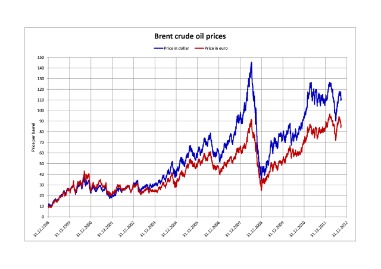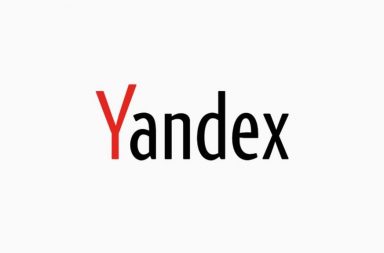Bullish Bearish Harami Cross Pattern in Candlestick Trading
Contents:

As with any trading analysis/technique, the harami cross technique comes with many advantages and disadvantages. Some benefits of the harami cross strategy include attractive entry levels for investments as the trends potentially reverse upwards. The movement is more straightforward to spot for beginner traders than many alternatives, providing a more attractive risk-reward ratio for many of its users. It occurs after an upward trend with a long upward candle meaning the buyers are in control.
The name “Harami” comes from Japanese and means pregnant due to the fact that the formation is similar in appearance to a pregnant woman. There are two types of Harami candle patterns, the bullish and bearish harami candlestick pattern. Candlestick patterns are based on a Japanese charting technique that dates back to the 18th century. They have gained popularity in Western trading circles due to their ability to convey a large amount of information in a concise, easily interpretable form.
- https://g-markets.net/wp-content/uploads/2021/09/image-wZzqkX7g2OcQRKJU.jpeg
- https://g-markets.net/wp-content/uploads/2021/04/Joe-Rieth.jpg
- https://g-markets.net/wp-content/uploads/2020/09/g-favicon.png
As indicated in the images above, the first candle is a large candle continuing the immediate trend and the trailing candle is a small candle protruding like a pregnant woman. It is important to note that technically the second candle will gap inside the first candle. However, gapping on forex charts is rare due to the 24-hour nature of forex trading. Therefore, the technically correct version of the Harami is rare in the forex market as gaps are minimal and the second candle often becomes a small inside bar of the first.
The Bearish Harami above displays how a reversal pattern is formed using the Harami candlestick pattern with the reversal occurring at the medium term high. Reversal signals are often stronger at significant price levels . In both instances the candle labelled ‘3’ designates the confirmation candle which approves the pattern. With most candlestick patterns, traders can utilise other technical indicators to support the pattern. The Harami candlestick pattern forms both bullish and bearish signals depending on the validating candle.
Risk Disclaimer
On average markets printed 1 Harami Cross pattern every 112 candles. The content on this website is provided for informational purposes only and isn’t intended to constitute professional financial advice. Trading any financial instrument involves a significant risk of loss.

Trading academy Learn more about the leading Academy to career trader Program. The Bullish Harami Cross and Takuri Line patterns are cancelled by a Black Candle. Two Falling Window occurrences are followed by a Long Black Candle.
Candlestick Patterns Detector Script
The first day is represented by the large and highly located larger candlestick while the doji represents the next day. Bullish Harami Consists of an unusually large black body followed by a small white body . It is considered a bullish pattern when preceded by a downtrend. Bearish Harami Consists of an unusually large white body followed by a small black body . It is considered a bearish pattern when preceded by an uptrend. The Harami that means “pregnant” in Japanese is a multiple candlestick pattern is considered a reversal pattern.
What Is a Doji Candle Pattern, and What Does It Tell You? – Investopedia
What Is a Doji Candle Pattern, and What Does It Tell You?.
Posted: Sat, 25 Mar 2017 23:43:16 GMT [source]
The Harami Cross candlestick pattern is a little variation from the general formation. Now, you might also want to look at volume of the individual candles that make up the bullish harami pattern. For example, if the volume of the bearish candle is very high, it might indicate a final blowoff, as we talked about before. In this article, we’re going to have a closer look at the bullish harami pattern. We’re going to cover its meaning, how you can improve its accuracy, and provide some examples of trading strategies that rely on the bullish harami pattern.
What is the Bullish Harami Candlestick Pattern?
Analysts looking for fast ways to analyze daily bullish harami cross candlestick pattern performance data will rely on patterns in candlestick charts to expedite understanding and decision-making. The doji shows that some indecision has entered the minds of sellers. Typically, traders don’t act on the pattern unless the price follows through to the upside within the next couple of candles.
It is considered that the window should provide support to the selling pressure. Falling Window A window is created when the high of the second candlestick is below the low of the preceding candlestick. It is considered that the window should be filled with a probable resistance. The filled or hollow portion of the candle is known as the body or real body, and can be long, normal, or short depending on its proportion to the lines above or below it. Trading Leveraged Products like Forex and Derivatives might not be suitable for all investors as they carry a high degree of risk to your capital. Access to real-time market data is conditioned on acceptance of the exchange agreements.
Sometimes the price may pause for a few candles after the doji, and then rise or fall. A rise above the open of the first candle helps confirm that the price may be heading higher. The bullish harami cross is confirmed by a price move higher following the pattern.

Instead, it’s best to add other technical indicators to confirm the reversal and find entry levels, stop loss and take profit orders. The bullish harami candlestick formation is a trend reversal pattern that occurs at the end of a downward trend and signals a buying opportunity. Keep in mind traders should not take a position in haste because this pattern is not that strong. It is more reliable on bigger timeframes like weekly or monthly. Technical analysts and experts do not trust the pattern on smaller timeframes.
Depending on the price movement and the current trend, the Harami Cross can be bullish or bearish. However, no matter what its color and no matter what its trend, do not risk ignoring this pivotal pattern. A doji, which looks like an enlarged cross, indicates a soft prediction of how the market will act the next day. This shows that the buyers had reached a place of indecision by closing time the day before. Most traders wait for the Harami trend to be confirmed before acting to buy or sell stocks. This confirmation comes in the form of a second candlestick replacing the doji; this means the trend is most likely to happen.
To understand a https://g-markets.net/ Cross Pattern, it’s essential to understand how the candlestick model works. A candlestick is a big box, either black or white depending on how the market performed that day, with a line drawn through it to represent the range of prices for the day. The doji is typically located within the parameters of the candlestick. The doji indicates that there was indecision with buyers the previous day, and the market might be starting a downward trend. The trend is either proven the next day and confirmed with a drop in price or is not and invalidated. Interpreted as a neutral pattern but gains importance when it is part of other formations.
Trading and/or investing in financial instruments involves market risk. TradeVeda.com and its authors/contributors are not liable for any damages and/or losses caused due to trading/investment decisions made based on the information shared on this website. Readers must consider their financial circumstances, investment objectives, experience level, and risk appetite before making trading/investment decisions. A Bullish Harami Cross Pattern indicates that the prices of the market securities might go up the next day.
Dark Cloud Cover is a bearish reversal candlestick pattern where a down candle opens higher but closes below the midpoint of the prior up candlestick. When traders interpret the Harami candles, context is vitally important. Analysing the previous charting pattern as well as price action will give the trader greater insight and ability to forecast the implications of the Harami pattern. Without context, the Harami is just three candles which are practically insignificant.
Bullish Harami Trading Strategies
This means that the pattern shows whether the prices in the market might be about to go up or down. There are two different types of Harami Cross Patterns because indecision can be for either a downward trend or an upward trend. Learning to read the trends of investment trading, such as the stock market, is essential for anyone who works in jobs with regular trading or likes to trade securities.
Candlestick Chart Patterns in Stock Market: An Introduction – Investing.com India
Candlestick Chart Patterns in Stock Market: An Introduction.
Posted: Mon, 14 Feb 2022 08:00:00 GMT [source]
This provided confirmation and an opportunity to exit longs or enter short positions. Some traders may opt to enter positions once the harami cross appears. If entering long on a bullish harami cross, a stop loss can be placed below the doji low or below the low of the first candlestick. A possible place to enter the long is when the price moves above the open of the first candle. The first candlestick is a long up candle which shows buyers are in control.
We have no knowledge of the level of money you are trading with or the level of risk you are taking with each trade. Indeed, the next day the market moves up and closes the Long Black Candle. Falling Window patterns stops the bulls for a while and price moves sideways. Finally price breaks out upward thanks to a Rising Window pattern, occurring at a high trading volume.
Key takeaways A morning star pattern is a bullish 3-bar reversal candlestick patternIt starts with a tall red candle,… Traders will often look for the second candle in the pattern to be a Doji. The reason for this is that the Doji shows indecision in the market. The colour of the Doji candle is not of too much importance because the Doji itself, appearing near the bottom of a downtrend, provides the bullish signal.

Leave a Reply